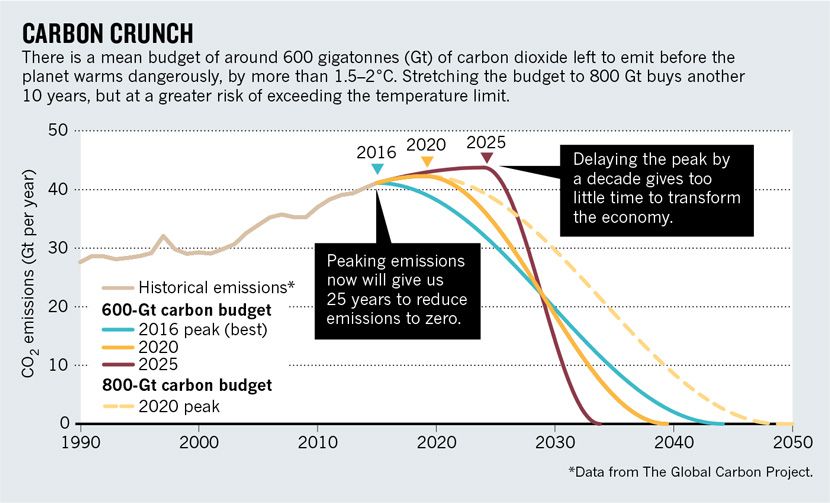21 hours agoUnder the Paris Agreement the building sector must operate at net-zero carbon by 2050. Published under licence by IOP Publishing Ltd IOP Conference Series.

Embodied Carbon Emissions In Buildings Greenbuildingadvisor Zero Energy Building Natural Building Materials Energy Conservation
A newbuild two-bed cottage The carbon footprint of building a house depends on all kinds of things including of course the size.

Carbon emissions of building materials. To meet the targets set forth in the Paris Climate Agreement global carbon emissions from the built environment must peak. This increase was due to a shift away from the direct use of coal oil and traditional biomass towards. For this target to be possible building carbon emissions need to halve by 2030.
Modern cement the active ingredient in concrete is made primarily from limestone which is heated with other raw materials in a kiln at more than 2600 degrees Fahrenheit. The building sector is the worlds single largest emitter of Greenhouse Gases GHGs accounting for 30-40 of total global GHG emissions. Our industrys emissions currently account for 40 percent of total global annual CO2 emissions.
Eight percent of CO2 emissions globally come from cement production alone according to UK-based public policy think tank Chatham House. Limestone is mostly calcium carbonate. Learn about the Embodied Carbon in Construction Calculator EC3 Tool an open source tool for architects engineers owners construction companies building material suppliers and policy makers to compare and reduce.
Rising emissions in the buildings and construction sector emphasize the urgent need for a triple strategy to aggressively reduce energy demand in the built. Evaluation Model of Building Materials Suppliers Considering Carbon Emissions. Global Status Report for Buildings and Construction 2019 The buildings and construction sector accounted for 36 of final energy use and 39 of energy and process-related carbon dioxide CO2 emissions in 2018 11 of which resulted from manufacturing building materials and products such as steel cement and glass.
The construction industry accounts for 11 of all global emissions with the bulk of that 8 coming from cement production. As we have already discussed the extraction production and transportation of basic building materials use a tremendous amount of energy and. The challenge we face is overwhelming and complex.
Earth and Environmental Science Volume 189 Physical and Chemical Properties of Materials Citation Man He et al 2018 IOP Conf. Man He 1 Yanjie Wen 1 and Wen Jiang 1. An LCA evaluation by Priopta looks at the embodied carbon or Global Warming Potential GWP of the materials used in a building.
Using Wood and PLC in Building Design and Construction. 80 tonnes CO2e. Of that a third is attributable to embodied carbon.
The 2020 Global Status Report for Buildings and Construction from the Global Alliance for Buildings and Construction GlobalABC found that while global building energy consumption remained steady year-on-year energy-related CO 2 emissions increased to 995 GtCO 2 in 2019. Embodied carbon emissions represents the GHG emissions associated with the manufacturing maintenance and decommissioning of a building. Vrinda Sankarakumar age 12 Kirkland Middle School.
Embodied carbon is carbon that is emitted when making building materials and transporting them. Other critical building materials such as steel aluminum and glass are also major CO2. Embodied carbon refers to carbon dioxide emitted during the extraction manufacture and transport of building materials.
Embodied carbon refers to carbon dioxide emitted during the manufacture transport and construction of building materials together with the use phase and end of life emissions. Operational carbon refers to carbon dioxide emitted during the life of a building emissions from heating cooling lighting etc. Learn more about specific and practical strategies for selecting products and materials that reduce embodied carbon emissions and move the industry.
But another huge part of the carbon equation is the embodied carbon associated with the industrial practices in the manufacturing of our building materials. Embodied carbon is calculated by tracking emissions through a life cycle assessment process Image 1.

2030 Challenge For Products Buildinggreen Com

Architecture S Carbon Problem Blueprint For Better Blueprints Climate Change Effects Sustainable Architecture Design

Embodied Carbon The Levy Partnership Embody Energy Efficient Buildings Construction Sector

Infographic Shows The Amount Of Various Building Materials That Can Be Produced For 1 Ton Of Co2 Green Building Materials Building Materials Infographic

Carbon Neutral Buildings Creating Value Through Architecture White Arkitekter In 2021 Energy Efficient Buildings Carbon Neutral Carbon

A New Tool Could Make Carbon Aware Material Specifications A Reality Awareness Built Environment Building Systems

Even A 2020 Peak In Emissions Still Requires Net Zero Global Emissions 20 Years Later In 2040 Emissions Carbon Sequestration Sustainable Building Materials

Embodied Carbon In Construction Calculator Construction Calculator Embody Construction Calculators

This Is From The U S Green Building Council Report Over The Next 25 Years Co2 Emissions From Buildi Green Building Sustainable Building Materials Building

Seen A Lot About Embodied Carbon And Whole Carbon Lifecycle So I Thought I Would Share My Embodied Carbon Life Cycle Life Cycles Carbon Impact Carbon Emissions

Insulation Final 01 Carbon Impact Insulation Batt Insulation

Resources Solid Waste Gsa Sustainable Facilites Tool Life Cycles Ghg Emissions Cycle

Benefits Of Green Carbon Emissions Emissions Payback

Can Concrete Save Us Locking Up Carbon In Building Materials Building Materials Concrete Carbon

Concrete The Most Widely Used Construction Material In The World Is Responsible For 8 Of The World S Carbon Construction Materials Building A House Building

Free Embodied Carbon Calculator To Help Move To Greener Buildings A Free App For Measuring The Embodied Carbo Carbon Calculator Carbon Emissions Ghg Emissions

Waugh Thistleton Project Is A Textbook Of Modern Low Carbon Design Carbon Emissions Emissions Carbon
Comments
Post a Comment